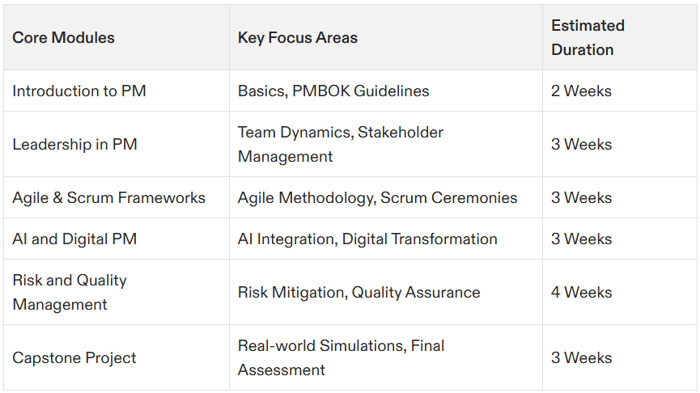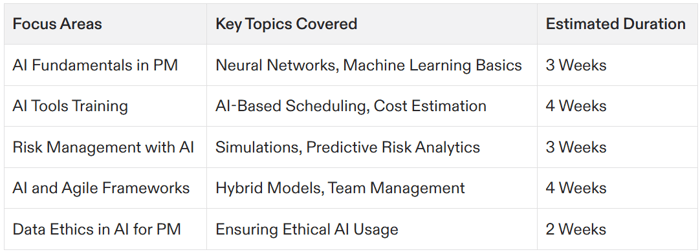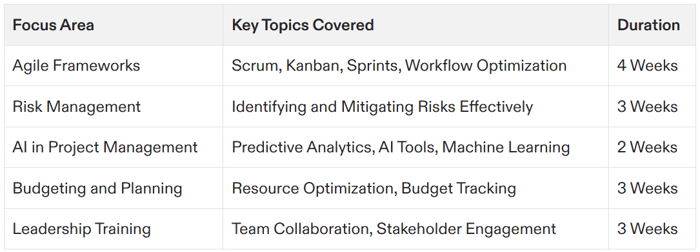Table of Contents
- Introduction: Why Managing Non-Profit Projects is Like Herding Cats (But With a Purpose)
- What Is a Non Profit Project Management Certification?
- Why Should You Get a Non Profit Project Management Certification?
- Key Learning Components of the Certification
- How This Certification Stands Out from Traditional Certifications?
- Real-World Case Studies: How Non-Profit PM Certification Transforms Organizations
- Top Skills Gained from a Non-Profit PM Certification
- Non-Profit vs. Corporate Project Management: Key Differences
- The Role of Technology in Non-Profit Project Management
- 10 Less Commonly Known Facts About Non-Profit Project Management
- Final Thoughts
- FAQs
Introduction: Why Managing Non-Profit Projects is Like Herding Cats (But With a Purpose)
If you’ve ever tried to organize a charity event, manage a team of volunteers, or get a project off the ground with a budget smaller than your morning coffee fund, you know non-profit project management is no joke. It’s like herding cats, except those cats are donors, stakeholders, and volunteers—all with different priorities and expectations. That’s where a Non Profit Project Management Certification comes in. It’s your ultimate toolkit for getting things done efficiently, keeping everyone on the same page, and ensuring your project makes a real impact.

What Is a Non Profit Project Management Certification?
A Non Profit Project Management Certification is a specialized qualification designed to equip professionals with the skills needed to lead and manage projects in the mission-driven sector. Unlike traditional project management, which focuses heavily on profits and efficiency, non-profit project management prioritizes social impact, resource allocation, and stakeholder engagement.
Core Features of the Certification:
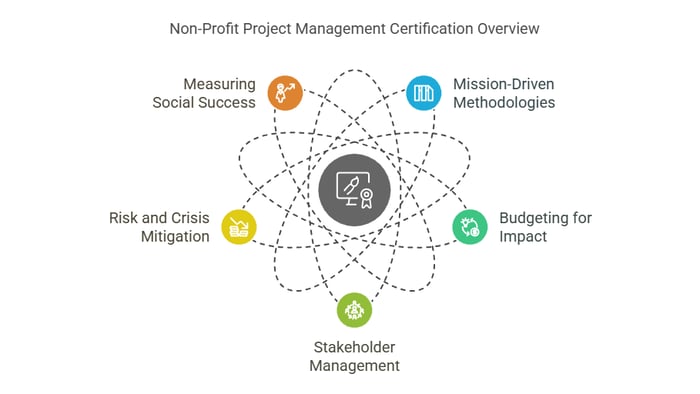
Mission-Driven Methodologies: Learn how to apply Agile, Waterfall, and hybrid project management models tailored for non-profits.
Budgeting for Impact: Master financial planning strategies that help maximize limited resources.
Stakeholder Management: Develop skills to align the interests of donors, volunteers, and communities.
Risk and Crisis Mitigation: Gain expertise in anticipating and managing funding volatility and operational setbacks.
Measuring Social Success: Learn how to track success beyond financial metrics, using impact-driven Key Performance Indicators (KPIs).
With this certification, you won’t just be a project manager—you’ll be a changemaker. If you're exploring different certification options, check out this detailed guide on Project Management Certification PMI to understand its benefits and requirements.
Why Should You Get a Non Profit Project Management Certification?
If you work in the non-profit sector, you already know that passion alone doesn’t keep the lights on. Managing projects effectively is the key to making a tangible difference. Here’s why this certification is a game-changer:
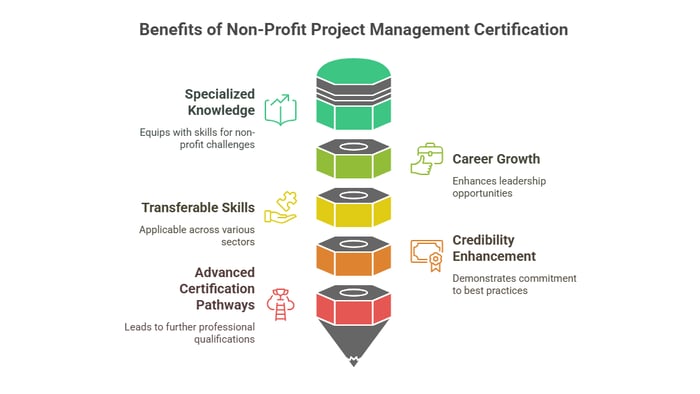
1. Specialized Knowledge for Unique Challenges
Unlike traditional businesses, non-profits rely on grants, donations, and fundraising campaigns. A certification in non-profit project management equips you with budgeting, compliance, and impact measurement skills specific to mission-driven organizations.
2. Career Growth and Leadership Opportunities
Organizations actively seek certified professionals who can manage projects efficiently and optimize limited resources. This certification sets you apart as a leader in non-profit operations.
3. Transferable Skills Across Multiple Sectors
From humanitarian aid and environmental conservation to education and healthcare, the skills you gain apply to a wide range of non-profit sectors.
4. Enhances Your Credibility
Having a certification demonstrates your commitment to best practices in non-profit project management, making you a more attractive candidate for leadership roles.
5. A Step Towards Advanced Certifications
Many professionals combine this certification with the APMIC Project Management Certification, which offers 400+ modules covering leadership, IT strategies, and risk management.
Not sure which credential suits your career goals? Our in-depth analysis on Which Project Management Certification is Best provides a complete comparison to help you decide.
Key Learning Components of the Certification
A non-profit project management certification doesn’t just teach you how to organize tasks—it helps you master every stage of project execution. Here’s what you’ll learn:
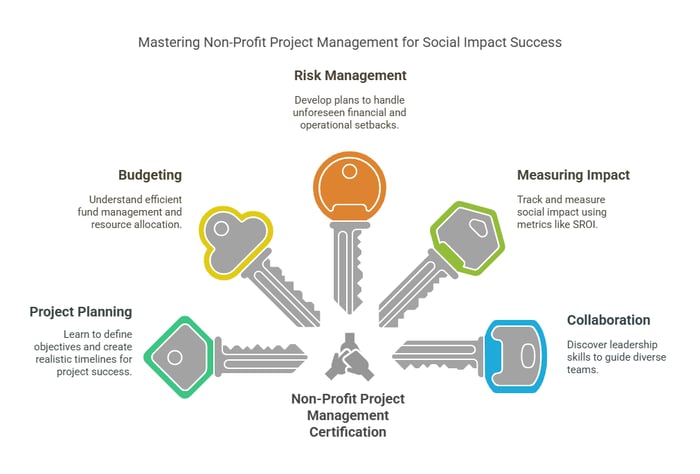
1. Project Planning & Execution
Learn how to define objectives, create realistic timelines, and track milestones to ensure project success.
2. Budgeting & Resource Allocation
Understand how to manage funds efficiently, secure grants, and stretch budgets without compromising impact.
3. Risk & Crisis Management
Develop contingency plans to handle unforeseen financial and operational setbacks.
4. Measuring Social Impact
Learn to track and measure impact using metrics like Social Return on Investment (SROI).
5. Collaboration & Leadership
Discover how to lead diverse teams of employees, volunteers, and external stakeholders.
How This Certification Stands Out from Traditional Certifications?
While PMP and CAPM certifications focus on corporate project management, non-profit project management certifications emphasize community impact, ethical decision-making, and donor engagement.
Pairing this certification with APMIC’s program enhances your ability to manage larger-scale projects that require hybrid project management models, financial modeling, and digital transformation.
Pro Tip: If you're just starting your project management career, consider obtaining the Best Entry-Level Project Management Certification to build a strong foundation in the field.
Real-World Case Studies: How Non-Profit PM Certification Transforms Organizations
Many non-profits struggle with budget constraints, disorganized workflows, and donor accountability. A well-structured non-profit project management certification can help turn these challenges into opportunities. Let’s look at real examples of organizations that thrived after implementing project management principles.
Case Study #1: Habitat for Humanity – Scaling Projects with Agile
Habitat for Humanity, a global non-profit focused on affordable housing, adopted Agile methodologies after training its project managers. The results?
✅ 30% faster project completion rates by breaking work into smaller sprints.
✅ Improved volunteer coordination, reducing downtime.
✅ Better budgeting accuracy, minimizing project overruns.
Case Study #2: Red Cross – Disaster Relief with Better Project Planning
The Red Cross needed a structured approach to disaster response. After incorporating certified project managers, they:
✅ Created standardized project templates, reducing planning time by 40%.
✅ Used risk assessment frameworks to better prepare for emergencies.
✅ Streamlined resource allocation, ensuring faster response times.
These examples highlight how non-profit PM certifications empower teams to work smarter, not harder.
Top Skills Gained from a Non-Profit PM Certification
Getting certified isn’t just about adding a title to your résumé—it’s about mastering critical skills that improve efficiency and impact. Here are some of the top skills you’ll gain:
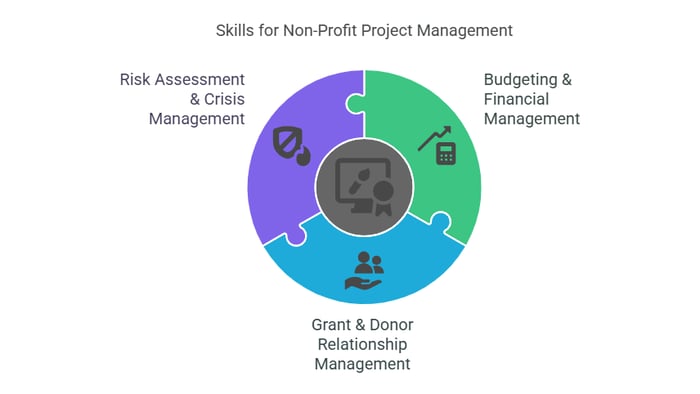
1. Budgeting & Financial Management
Unlike for-profit organizations, non-profits rely on grants, donations, and limited funding. Certified project managers learn how to:
✅ Maximize budgets with cost-effective planning.
✅ Ensure financial transparency for donors and stakeholders.
✅ Optimize resources to achieve the greatest impact.
2. Grant & Donor Relationship Management
Since most non-profits depend on external funding, PM certification teaches you how to:
✅ Write compelling grant proposals aligned with project goals.
✅ Track fund utilization to maintain donor trust.
✅ Use donor management tools to streamline reporting.
3. Risk Assessment & Crisis Management
Non-profits often work in unpredictable environments (e.g., disaster relief, humanitarian aid). PM certification helps you:
✅ Identify potential risks before they become major issues.
✅ Develop contingency plans to avoid project failures.
✅ Manage crises effectively, ensuring rapid response.
Non-Profit vs. Corporate Project Management: Key Differences
Many professionals assume that project management is the same in all industries. However, managing non-profit projects differs significantly from corporate PM. Here’s how:
| Factor | Non-Profit PM | Corporate PM |
|---|---|---|
| Primary Goal | Social impact, community service | Revenue growth, market share |
| Funding Source | Donations, grants, fundraising | Sales, investments, business revenue |
| Stakeholders | Donors, volunteers, community beneficiaries | Shareholders, customers, executives |
| Project Flexibility | Must adapt to donor requirements, funding changes | More structured with predictable cash flow |
| Success Metrics | Community impact, donor satisfaction, efficiency | Profitability, ROI, competitive advantage |
Key Takeaway: Traditional PMP training focuses on corporate environments, while non-profit PM certification addresses the unique challenges of funding constraints, volunteer management, and donor accountability.
The Role of Technology in Non-Profit Project Management
Gone are the days of manual spreadsheets and paper forms! Today, non-profits use advanced tech tools to improve project management.
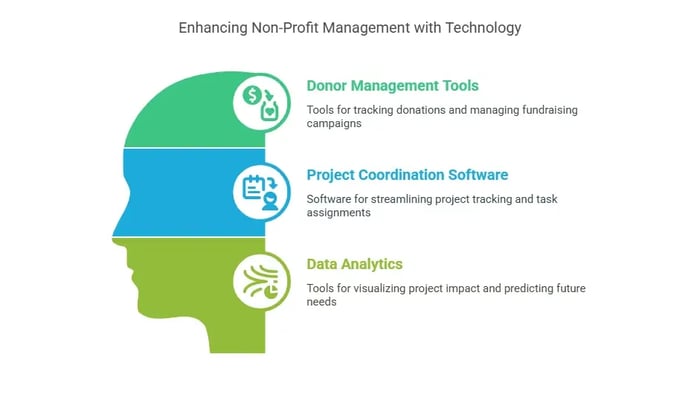
1. Donor & Grant Management Tools
- Salesforce for Nonprofits – Helps track donor history and manage fundraising campaigns.
- Bloomerang – Provides donor retention insights and automated outreach.
2. Project & Volunteer Coordination Software
- Asana & Trello – Streamline project tracking and task assignments.
- VolunteerMatch – Helps non-profits find and manage volunteers effectively.
3. Data Analytics for Impact Measurement
- Power BI & Google Data Studio – Allow non-profits to visualize project impact with real-time dashboards.
- AI-powered forecasting – Helps predict future funding needs and risk factors.
Non-profits that leverage technology see improved efficiency, better donor engagement, and higher project success rates.
10 Less Commonly Known Facts About Non-Profit Project Management
Most non-profits operate on razor-thin margins. Non Profit Quarterly
Stakeholder conflicts are among the biggest project risks. Charity Navigator
Volunteer burnout is a major issue. NCBI
AI is revolutionizing non-profit project management. Forbes
Most non-profit projects fail due to lack of proper planning. Project Management
Grant writing is a critical project management skill. Council of Non-Profits
Donor retention rates average only 45% annually. Fund Raising
Non-profit project managers often juggle multiple roles. Bridge Span
The hybrid project management model is gaining popularity. PMI
Leadership skills are more important than technical skills in non-profits. HBR
Final Thoughts
The Non Profit Project Management Certification isn’t just another qualification—it’s your passport to making a real difference. Whether you’re looking to climb the career ladder in the non-profit world or optimize the impact of your projects, this certification gives you the skills, credibility, and confidence to succeed.
And if you’re looking for the best project management certifications, check out the APMIC Project Management Certification—the gold standard in professional training.
FAQs
Is a non-profit project management certification worth it?
Absolutely! It equips you with specialized skills to handle budgeting, stakeholder engagement, and impact measurement—critical for non-profit success.
How long does it take to earn this certification?
Most programs take between 3 to 6 months, depending on your pace and prior experience.
Can I get this certification online?
Yes! Many institutions offer flexible online courses tailored for working professionals.
How does this certification help in career advancement?
It makes you a strong candidate for leadership roles such as Program Manager, Grants Coordinator, and Executive Director.
Is this certification recognized internationally?
Yes, major organizations worldwide recognize certified non-profit project managers.
Do I need a background in project management?
No, but having some experience in non-profit operations or leadership helps.
What’s the difference between this and PMP certification?
PMP focuses on corporate projects, while non-profit certification centers on mission-driven initiatives.
What salary can I expect after certification?
Certified non-profit project managers earn between $60,000 and $120,000, depending on experience and location.



